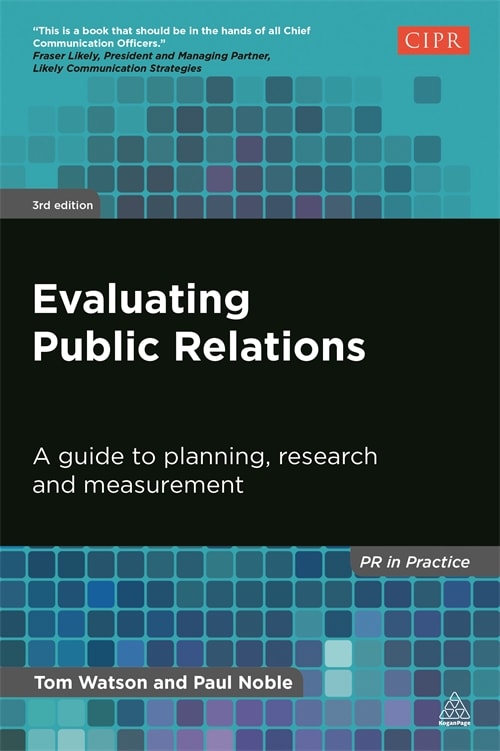 When the first edition of Evaluating Public Relations came out in 2005, it mostly dealt with the measurement of media relations activity. In it, we included a chapter on how to measure PR – influenced coverage on a no/or low-cost basis. An updated version of that chapter is included in the third edition of 2014 but the world of PR practice has moved on to include the measurement and evaluation of social media, greater emphasis on outcomes rather than outputs, and demands that PR/communication delivers value to the organisation.
When the first edition of Evaluating Public Relations came out in 2005, it mostly dealt with the measurement of media relations activity. In it, we included a chapter on how to measure PR – influenced coverage on a no/or low-cost basis. An updated version of that chapter is included in the third edition of 2014 but the world of PR practice has moved on to include the measurement and evaluation of social media, greater emphasis on outcomes rather than outputs, and demands that PR/communication delivers value to the organisation.
Although for some decades AVE was mistakenly used to show value, managements are now much more demanding and want real results. In 2010, the Barcelona Declaration of Measurement Principles included a ‘principle’ – The effect on business results can and should be measured where possible – which was aligned to many practitioners’ desire to express financial outcomes of their activity. However, it was not limited to P&L-type results. It could include intangibles such as reputation, brand value, licence to operate, support for productivity and innovation as well as financial tangibles that include sales, cost reduction, and project agreements.
We argue that PR/communications practitioners have to go a big step forward in the planning and strategy-setting process. Not only should communicational objectives align with organisational objectives, but they must ensure that communication is part of the organisation or client’s own objectives.
The term for this approach is Outflow, which is the economic impact that results from the influence on stakeholder relationships exerted through PR/communications. That goes beyond measuring outcomes of PR/communication activity as it is about the creation of value for the whole organisation.
In Germany, an entire communications performance management system has been developed around the concept of Outflow. It has been adopted by many major central European banks, technology and consumer products organisations. It is time that UK corporate, governmental and NGO communicators started looking at it and some other, more advanced metrics that bring PR/communication into the centre of organisations, rather than being left on the margins as a delivery function.
Take the CEO’s view
The leading Canadian communication consultant, Fraser Likely, gives this advice:
“In all my years of assessing communication functions – and in the course of that work interviewing CEOs – seldom has a CEO said that he/she values the media analysis results, the town hall results, the reach of Facebook or Twitter or the communication results of a particular marketing comms campaign in determining how well the function is performing.”
“Yet, these are the results that the Corporate Communication Officer (CCO) wants to present – or more specifically the results that PR agencies and research firms want the CCO to present.”
“So I believe it’s time to look at value from the CEO perspective.”
Evaluating Public Relations (3rd edition) by Tom Watson and Paul Noble
PR Masterclass: The Intersection of PR and GEO
Join PRmoment for a Masterclass featuring 10 of the industry’s foremost experts. You will walk away with a clear, actionable strategy for adapting your content to an AI-first search environment.
Taking place on Wednesday 25th February in London, both virtual and in person tickets are available.
Early bird ticket sale ends Friday 9 January.
PR MasterclassIf you enjoyed this article, sign up for free to our twice weekly editorial alert.
We have six email alerts in total - covering ESG, internal comms, PR jobs and events. Enter your email address below to find out more:









